Visits: 61
With the PS4 and PS4 Pro life-cycles officially reaching their ends, and Sony confirming PS5 details, we can’t help but wonder what Sony has in store as a successor to PlayStation VR.
Sony did technically release a second PSVR headset back in 2017: the CUH-ZVR2 added HDR compatibility, integrated headphones and a smaller connective cord. But, the true PSVR 2.0 will feature a much greater jump in specs that will take advantage of next-gen hardware to up its resolution, pixel quality and refresh rate.
The main question is, will the PlayStation VR 2 simply improve on its predecessor’s visuals, or will it add features like 6DoF tracking or even go wireless to compete with Oculus Rift and HTC Vive?
We’ve got the latest rumors and industry insider info on what the PlayStation VR 2 could look like, its likely release date, potential backwards compatibility and much more.
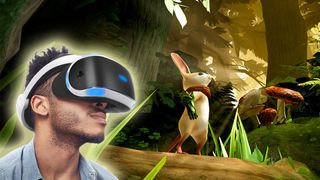
Moss on PSVR. (Image credit: Sony)
Cut to the chase
- What is is? The next version of PlayStation VR
- When is it out? Potentially 2020 or 2021 to coincide with the PS5 release
- How much will it cost? TBC – probably around the PSVR’s $499 launch price
PSVR 2 release date
It’s almost certain that PSVR 2 will work exclusively with the PlayStation 5, but we probably won’t be seeing the next-generation PlayStation until at least 2020.
With no official word yet on a PlayStation 5 release date, and Sony officially confirming it won’t be at E3 2019, it’s difficult to pin down exactly when we might get to see a PS5 console or the PSVR 2 – although Sony has confirmed we won’t see the PS5 in 2019.
If Sony mostly allocates its manpower to PS5 production, then the PSVR could launch much later than the console’s release date – perhaps a year or more. PlayStation VR launched three years after the PS4, after all.
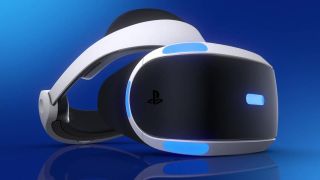
(Image credit: Sony)
However, Siliconera spotted two new filings relating to Sony’s virtual reality headset which could point to the sort of experiences the company is planning for the future. The pair were filed in 2017 and 2018 respectively, suggesting that (if they’ve been pursued by Sony) they could soon bear fruit.
The first relates to live events. Sony’s patent describes a scenario where a user is in attendance at a real world location, such as a sports stadium, with the headset “anchoring” them “to a physical location in the venue”.
They’d be surrounded by real-world attendees, letting them watch the event as if they were actually there. It sounds similar to other live VR applications, like Next VR, Melody VR or Oculus Venues.
More interesting, then, is the second application. This one speaks of turning buddies from your PSN games list into spectators of your games as you play. So, rather than generic NPC crowds in the stands of a FIFA match or along the track of a Gran Turismo race, your friends could chose to have an avatar representation of themselves turn up in your game.
These avatars could be true to life, or any sort of stylized representation they choose to submit. They could either choose to spectate in real-time in virtual reality, or show their support through a “pre-programmed” clip.
The fact Sony has already applied for these patents suggests PSVR 2 could be closer than we thought…
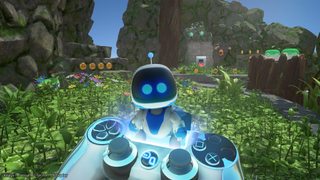
Astro Bot Rescue Mission on PSVR. (Image credit: Sony)
PSVR 2 news
Current PSVR headsets will work with the PS5
The first details about the PS5 have landed, and it has brought with it a confirmation that your current PlayStation VR headset will work with the next-gen console.
Speaking to Wired, Mark Cerny (lead system architect at Sony working on the upcoming console) confirmed that all existing versions of the PlayStation VR will be compatible with the next-gen console.
Whether there will be a new PlayStation VR 2 at launch is currently unclear. Cerny said, “I won’t go into the details of our VR strategy today.”
While he didn’t say that Sony won’t be updating its virtual reality headset at the launch of the next-gen console, he was swift to clarify that it’s worth buying an existing PSVR if you haven’t already got one.
He also said, “VR is very important to us and the current PSVR headset is compatible with the new console.”
Backwards compatible?
Games for the PlayStation 4 are set to be backwards compatible with the PlayStation 5 too, so we can expect that you’ll be able to switch your existing PSVR catalogue over to the next console.
PSVR 2 price
The current PlayStation VR starter bundle retails for $200 / £259 / AU$420, but this affordable cost came after several price drops.
The original price for a full bundle, $499 (£399, about AU$650), could give us a good idea of what Sony will charge for the PSVR 2 headset.
Of course, this new headset will have some potentially expensive tech to go with the PS5’s increased potential.
Japan Display (JDI), a LCD manufacturer co-run by Sony, recently unveiled its 3.2-inch, 1,001 pixels-per-inch (ppi) displays with 2160 x 2432 resolution. PSVR currently uses 386 ppi and 1920 x 1080 resolution for its one 5.7-inch screen.

How pixel density can improve the VR experience. (Image credit: JDI)
Adding better display quality, as well as doubling the screen count, could jump up the price.
Currently, the only somewhat “next-gen” VR headset on the market is the HTC Vive Pro, which retails for $800, £800 or around AU$1,045. Depending on the PSVR 2’s hardware, Sony could choose to list it as a premium device.
But, that would likely go against its brand of offering an affordable entry into VR. We’re hopeful Sony will avoid pricing all but the wealthiest among us out of VR.
We also recently spotted a patent for upgraded motion-control wands with finger tracking and haptic feedback.
Higher-cost bundles of PSVR 2 may very well include these controllers for VR experiences that a DualShock controller can’t provide.
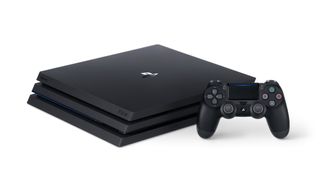
The PS4 Pro will be over four years old by early 2021. (Image credit: Sony)
Why be a PlayStation 5 exclusive?
PlayStation 4 owners (especially Pro owners) might be a bit peeved when they discover they can’t make PSVR 2 work on their consoles.
But, it could be Sony’s only option to make its second headset feel truly next-gen.
We tested out PSVR on the PS4 and compared the graphical quality to the Pro. In “Pro Mode”, we spotted minor improvements in textures, graininess and lag reduction. Ultimately, though, the difference didn’t feel that momentous.
While the PS4 Pro certainly packs a punch, it may not have the capacity to support VR with the higher resolution and pixel density that Sony’s new JDI displays enable.
The PSVR 2 could demand processing power that last-gen consoles simply can’t match.
Rumors suggest that the PlayStation 5 will use the newest AMD Ryzen CPU and updated Radeon graphics, an upgrade from the AMD Jaguar CPU of the PS4 and Pro. Sony could have trouble making its new headset compatible with two separate graphics systems.
All the updated hardware, design and accessories
The most concrete info we have on the PS4’s updated design comes from JDI’s announcement of its 3.2-inch display with 1,001ppi and 2160 x 2432 resolution.
JDI claims that this display will reduce latency to 2.2msec (compared to >18msec today), allow for 120Hz (same as the PSVR 1), and demand less processing power to achieve better image quality—potentially unlocking a lighter, smaller design for the headset.
The upgraded AMD Ryzen chip that Sony is currently researching could certainly achieve the processing power necessary to support these displays.
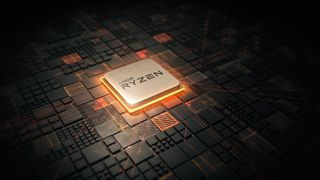
Credit: AMD
Sony, which uses JDI’s screens for its smartphones, will very likely rely on these upgraded displays for its new headset. Considering we already found the PSVR 1’s design comfortable for long playing periods, this could make its heir apparent even more enjoyable to use.
Of course, if the PlayStation VR 2 does go with dual displays, this will make the graphical demand for the headset much more difficult to achieve. For example, if Sony wanted 4K VR, then the PS5 would need to be capable of 8K streaming. That’s a tall ask to support a device that the majority of PS5 owners likely won’t purchase.
We do suspect that the PSVR 2 could go wireless, considering Sony prioritized cutting down the size and weight of the cord that connects the headset to the console in its PSVR 1 upgrade, it’s clear the company sees it as disruptive, even annoying. Removing it entirely is the logical next step.
By doing so, Sony will also make it easier to support room tracking for PSVR 2. Oculus and HTC have supported 6DoF tracking for experiences for a couple of years now, and it’s one of the primary areas in which PSVR falls short of its competition.
The PlayStation Camera does track your head and controller movements as you play while seated, but can’t keep track if you move around, and our reviewers found that it frequently lost track of the controller even while motionless.
Adding support for room tracking will only help Sony in increasing the size of its game library, as it will support more experiences that rely on wandering around a room.
Of course, this could mean that the new PSVR 2 bundle will include a couple of room sensors to augment the Camera’s tracking.
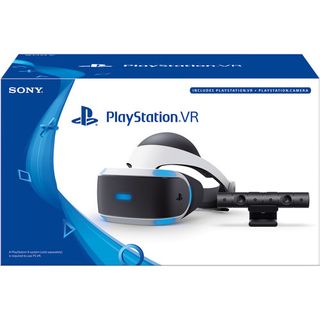
Most first-gen VR bundles came with the camera included, but none included 6DoF tracking sensors. (Image credit: Sony)
However, Sony could instead take the route that Lenovo did with the Mirage Solo headset, which adds WorldSense tracking tech inside of the headset itself. Reducing the number of peripherals could make the experience less onerous to set up.
We also suspect that Sony has plans to double down on Move controllers. Its recent patent shows that it wants to compete with the Oculus Touch and Vive controller by adding improved tracking functionality to its Move wands.
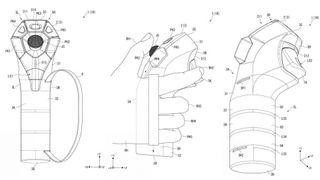
(Image credit: Sony)
Sony’s most promising idea is its “reaction force generator”, which would have portions of the Move wand expand or contract based on whatever the user is currently “holding” in-game.
This tech could make experiences feel more immersive than before, without having to give up on controllers entirely (see: Oculus’ haptic gloves).
PSVR 2: just what the VR industry needs?
As we’ve mentioned, PlayStation VR hasn’t met Sony’s sales expectations, but its sales are nothing to sneeze at compared to the high-end VR headset competition, but Sony had expected the entire VR market to grow.
Instead, Sony likely worries that VR will stay too niche to make the profits the company once hoped for. Kodera said Sony would have a more “realistic outlook” on what kind of future sales it can expect.
Kodera’s statement implies that Sony remains committed to producing more VR devices. Unfortunately, the tepid VR market could mean Sony invests less time and money into future VR experiences.
But, ideally, the PlayStation VR 2 and other next-gen headsets with better specs and fewer cords could revitalize the market and keep Sony fully on board with VR.
